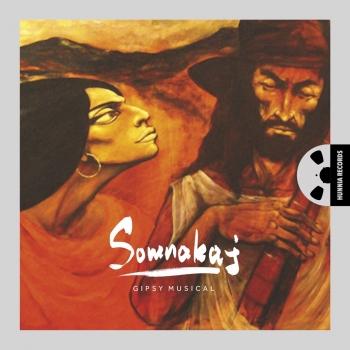Somnakaj
Biography Somnakaj
Somnakaj
the first gypsy musical came to life due to the dedicated hard work of several well-known Hungarian performing artists. The show was first introduced at the Budapest Spring Festival in April 2014 in the Palace of Arts with the support of the Ministry of Human Resources.
The performance has gone on a national tour since spring 2015 until the end of the year. It is visiting ten county towns to show wide audiences how mutual work and thinking together can build bridges between nationalities and members of the society of majority.
The tour set off on 31 May 2015 in Kaposvár, the second performance took place on 6 June in Pécs within the Off-program series of POSzT. The next performance is due at 8pm, on 18 August at the Flower Carnival in Debrecen. The final stop of the tour will be the CAFe Budapest Festival of Temporary Arts.
The outstanding virtue of the production is the intention to make fields of contemporary art meet on stage. Besides the dance and the music naive roma fine art also gets a role. The spectacular artistic works created by the roma-rooted Hungarian, Kossuth-awarded artist, István Szentandrássy, have become an important part of the image and scenery. This way the intention to maintain traditions and find modern ways to express ourselves is fulfilled.
The performance is a union of concert and theatre, dance and literature, traditional fine art, keeping of traditions and meeting of modern forms. It is a unique crossover. Real music of joy. At the birth of the performance the most important intention was to introduce the roma/gypsy culture as a part of both the national and the European culture. Furthermore, to ensure such high-level artistic cultural experience that encourages the start of a positive change of point-of-view in the field of discrimination in society.
Story: The play is carried on in new perspectives, spiced with theatrial elements and musical lyrics. Directed by Árpád Jutocsa Hegyi, the scenes are blended with a sense of humour while dramatic conflicts mark the differences between habits and ideologies of nationalities and the society of majority. The plot is set in Alsószentlélek, an existing village. According to the story based on real life and memoires, this little village used to be a rich location lived by Hungarians where two neighbours had been fighting so badly that as a result one sold his house to a gypsy in revenge. The new owner gradually settled in all his numerous family members and other relatives. So finally, such migration started that the whole population was exchanged and so the first pure gypsy village was established in the country.
Furthermore, it also raises general human questions. It tries to point out the personal responsibility and the manageability of fate through individual lives. The example of the family members with various life experience and personalities questions the grounds of generalized stereotypes and prejudice and points to the dangers of judgement.











